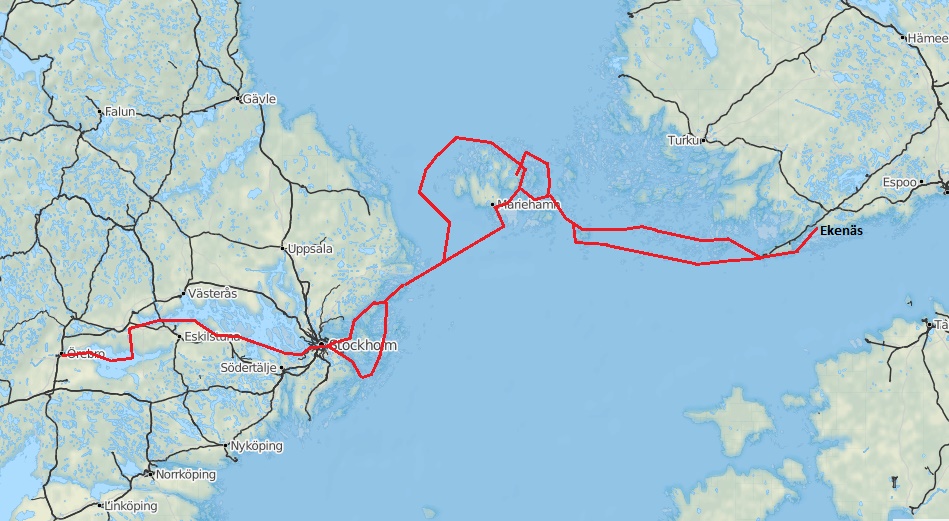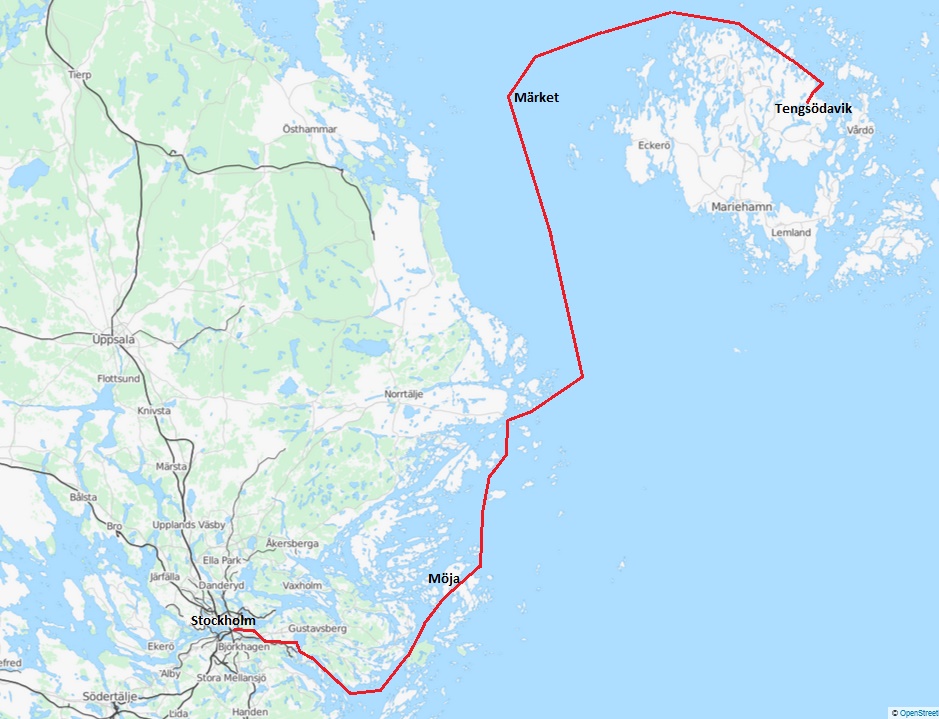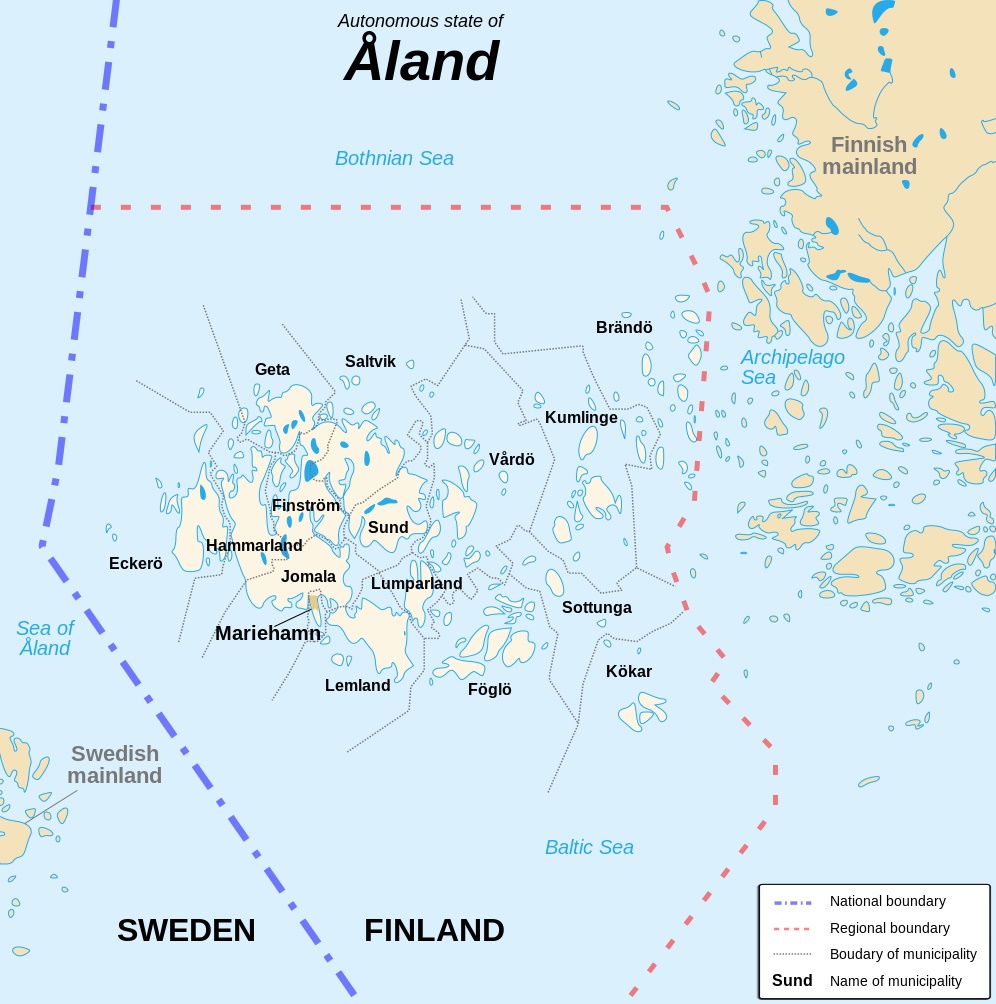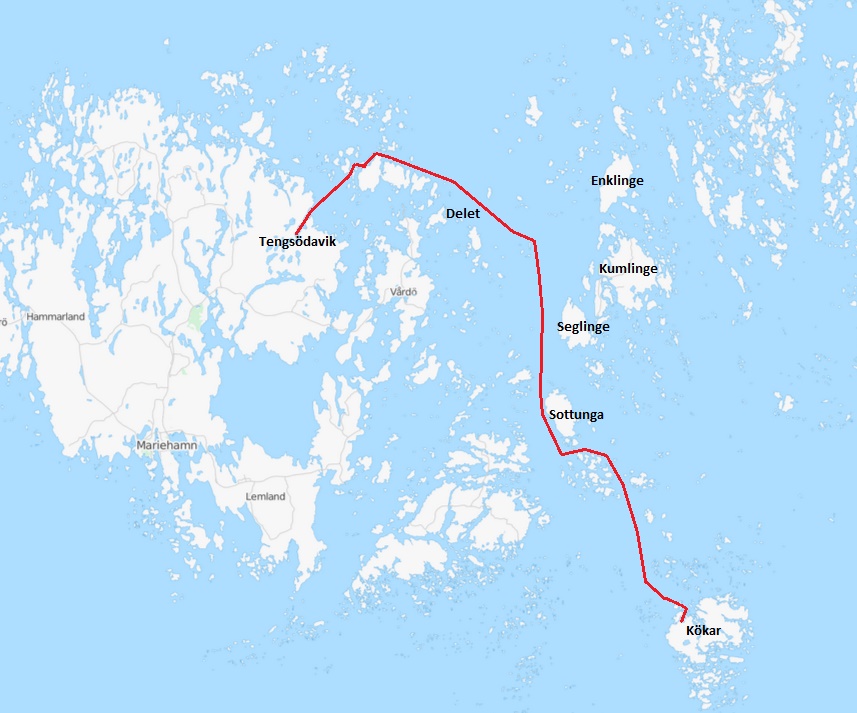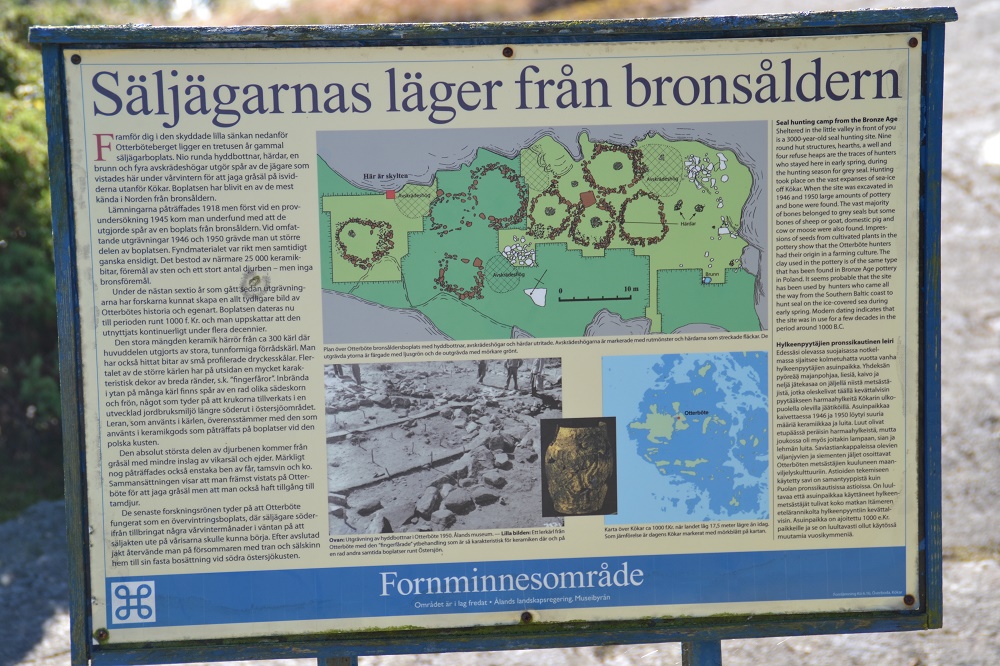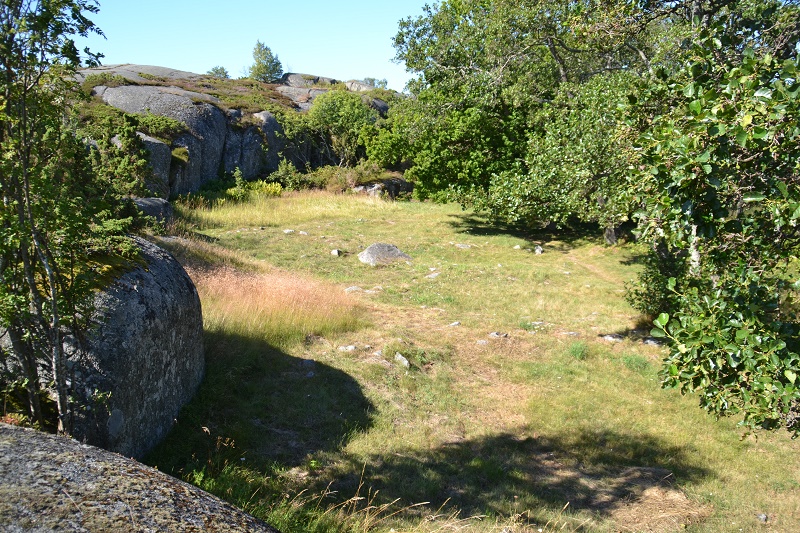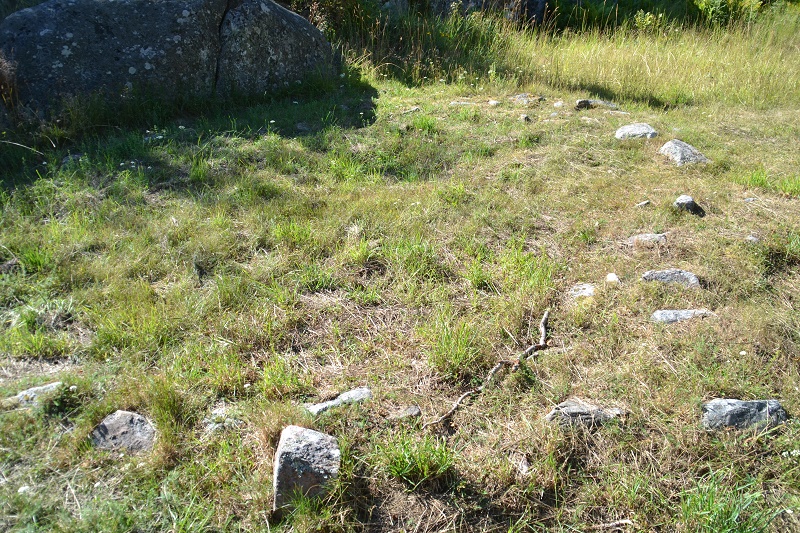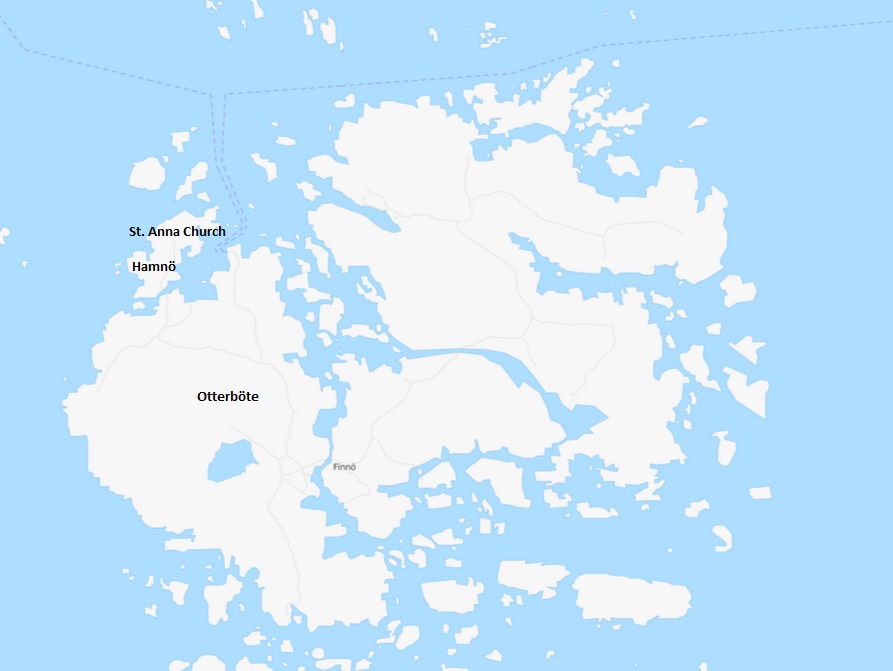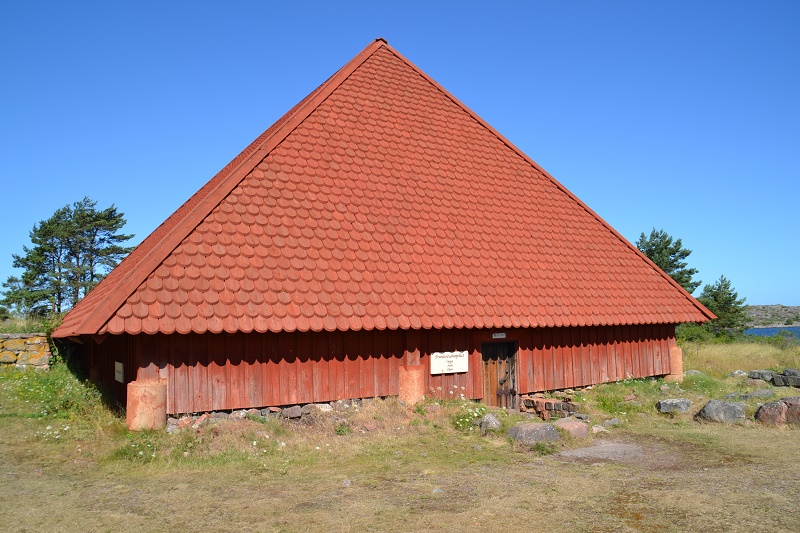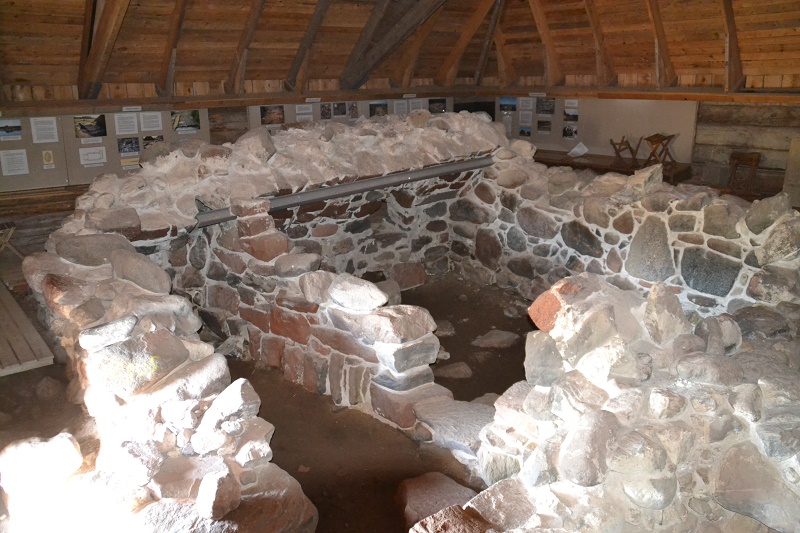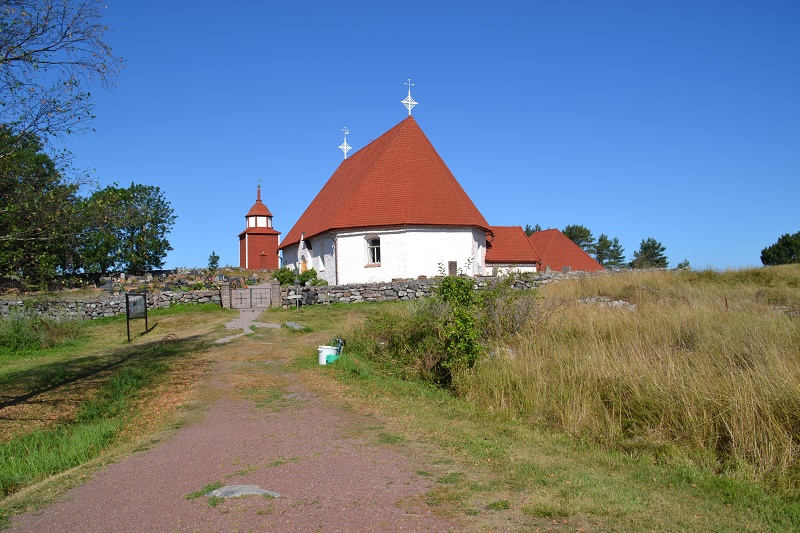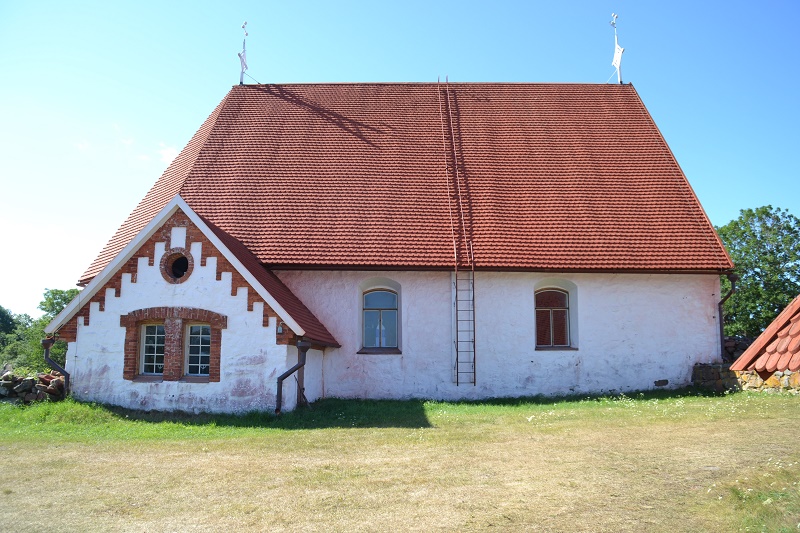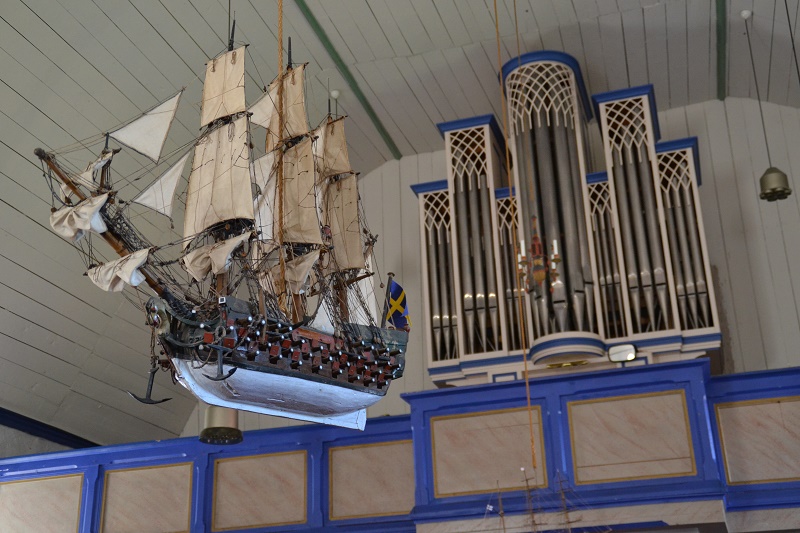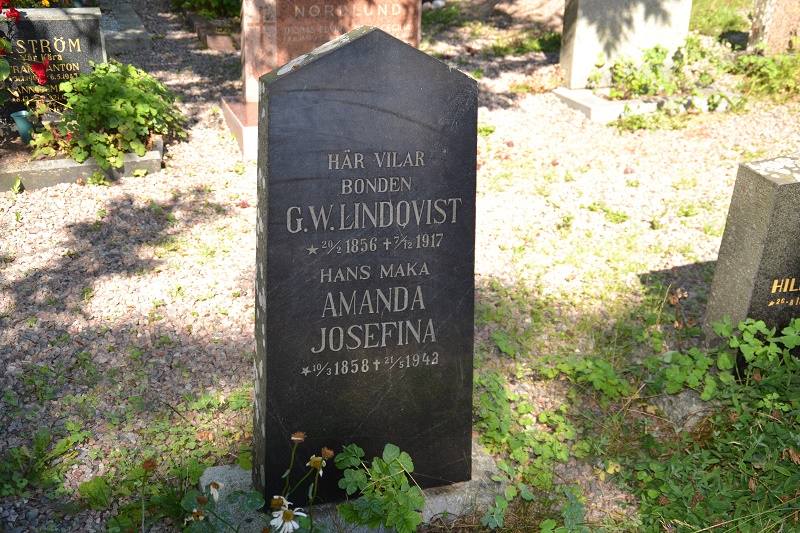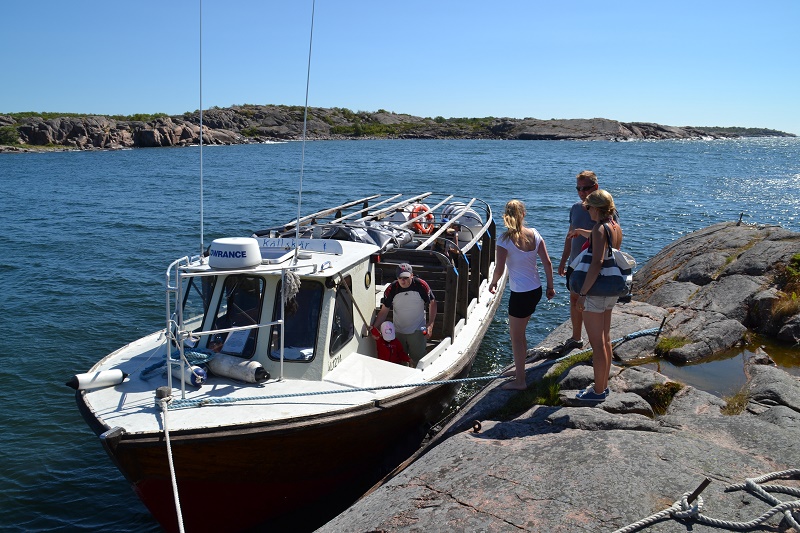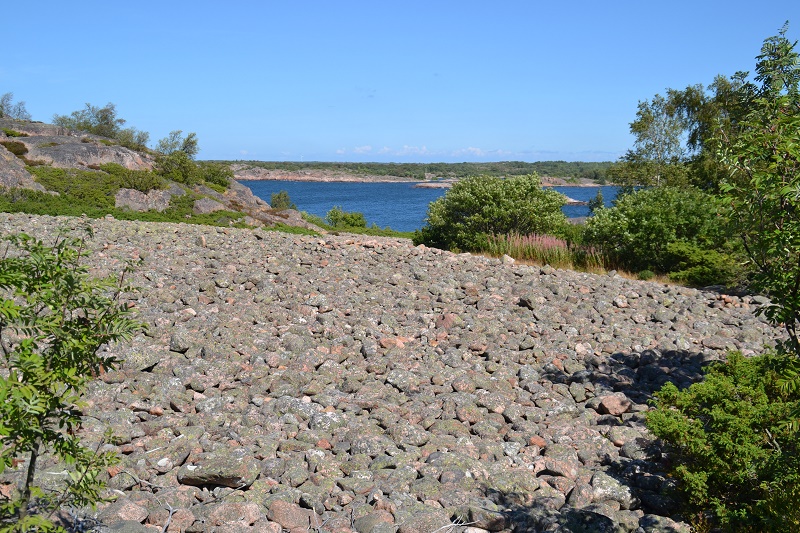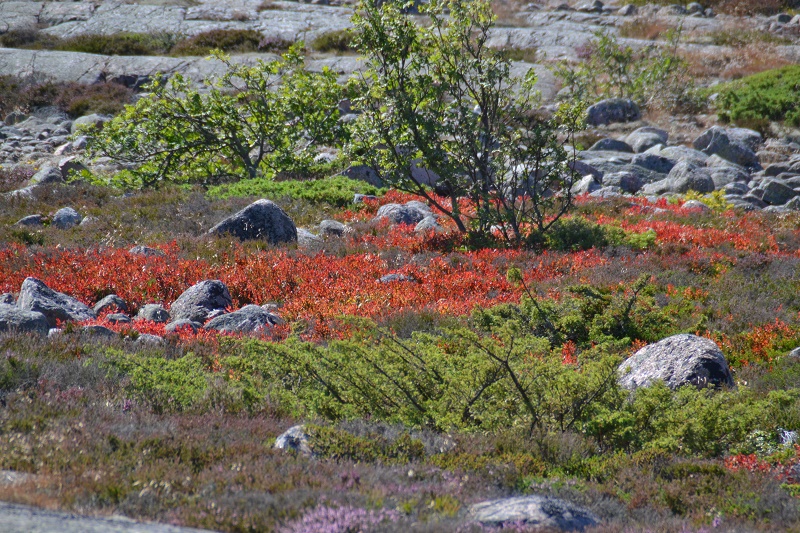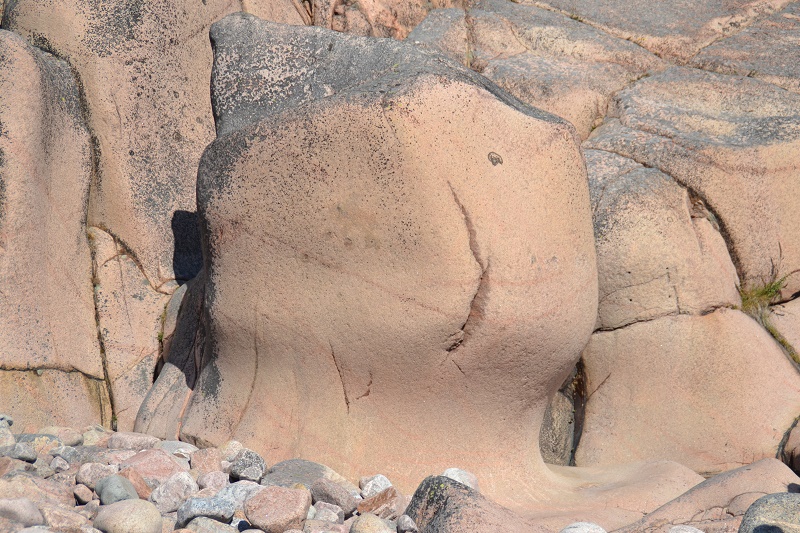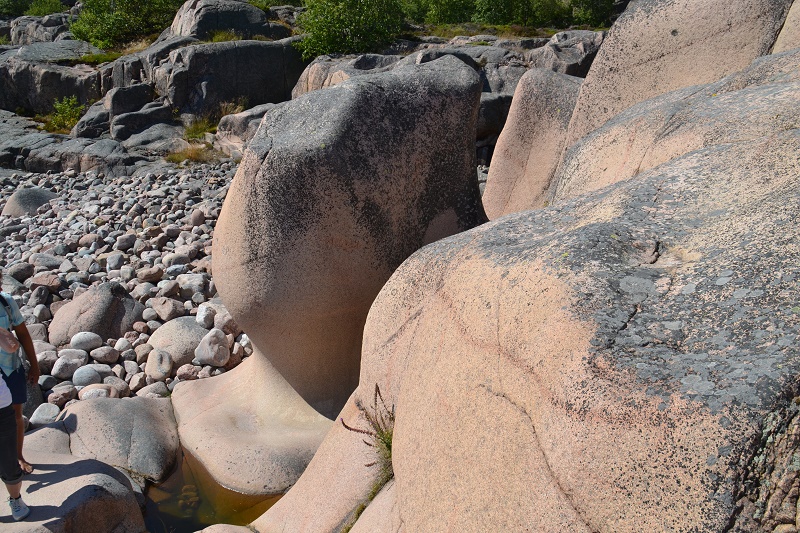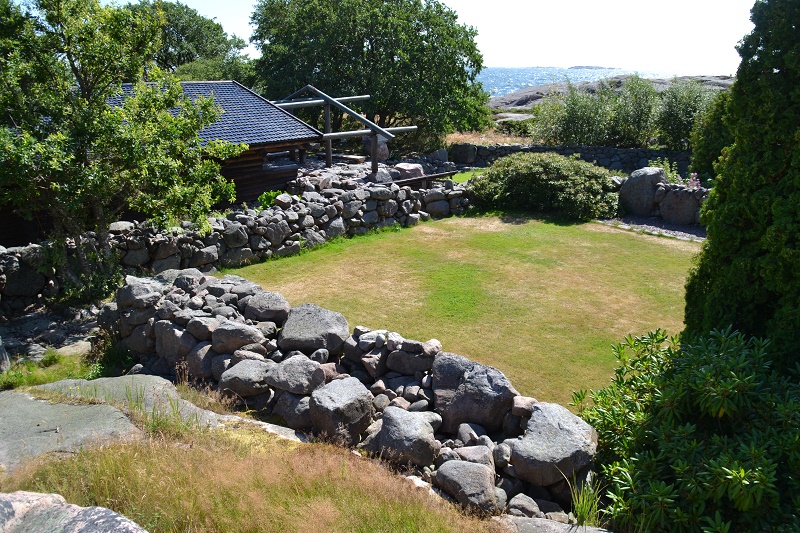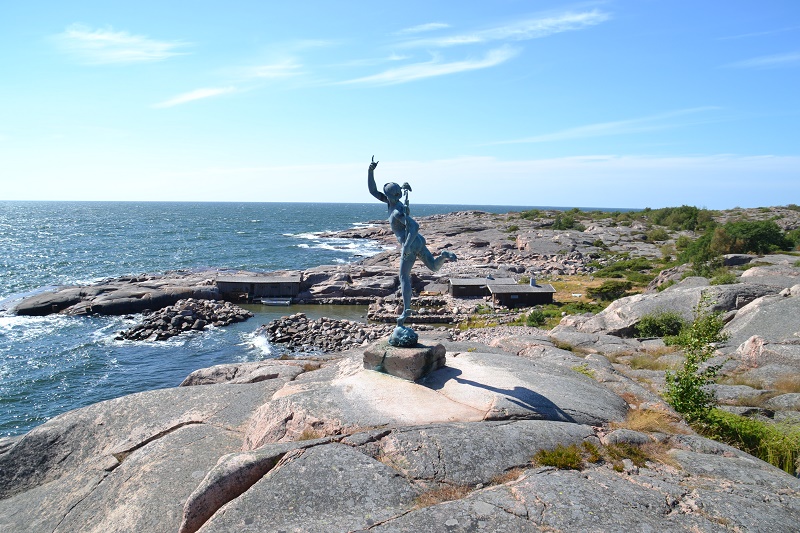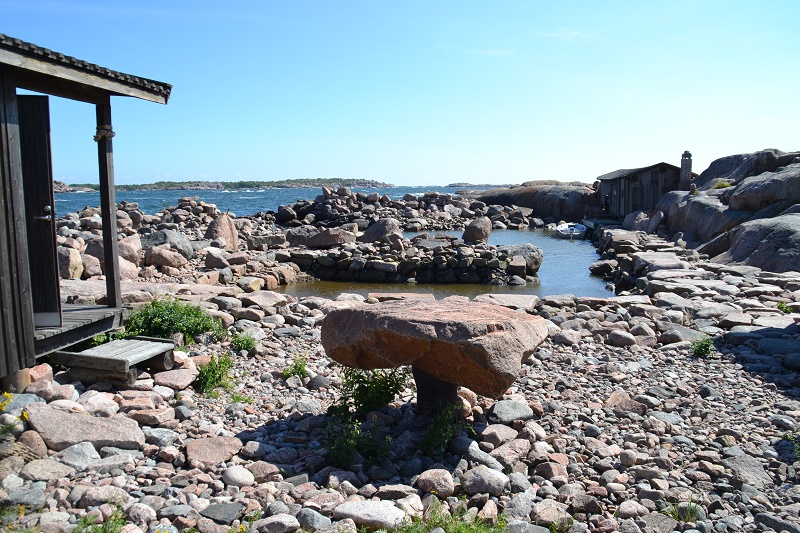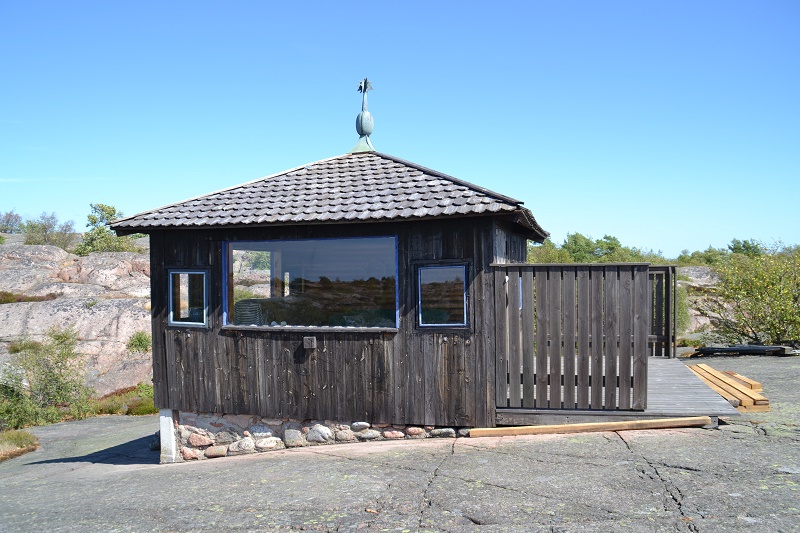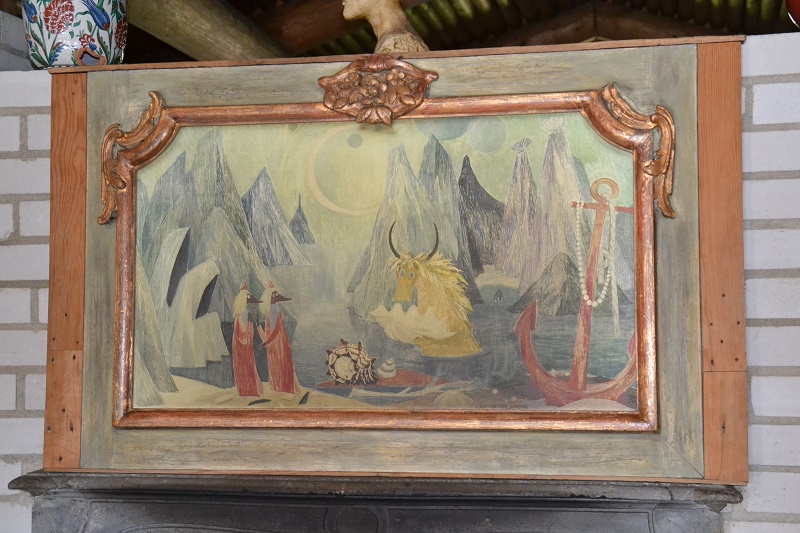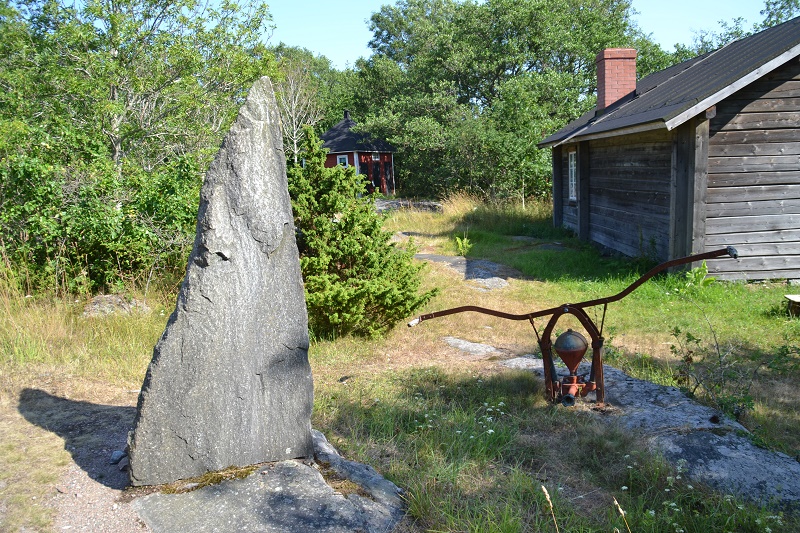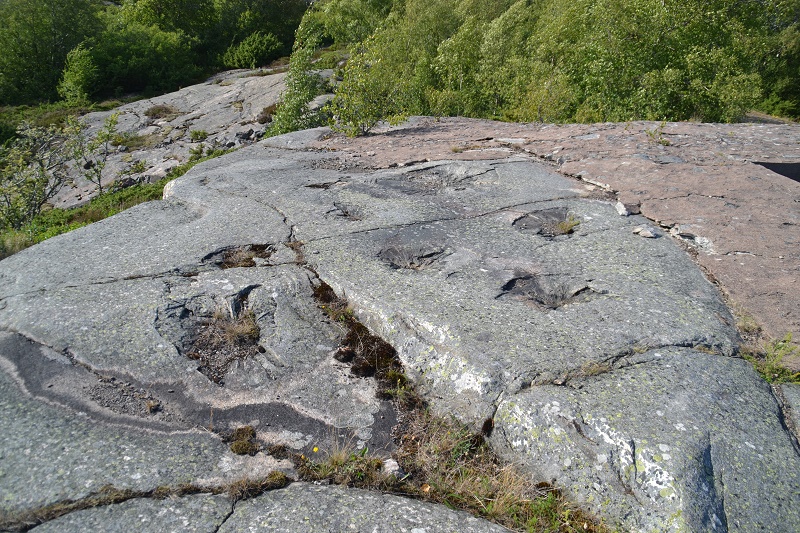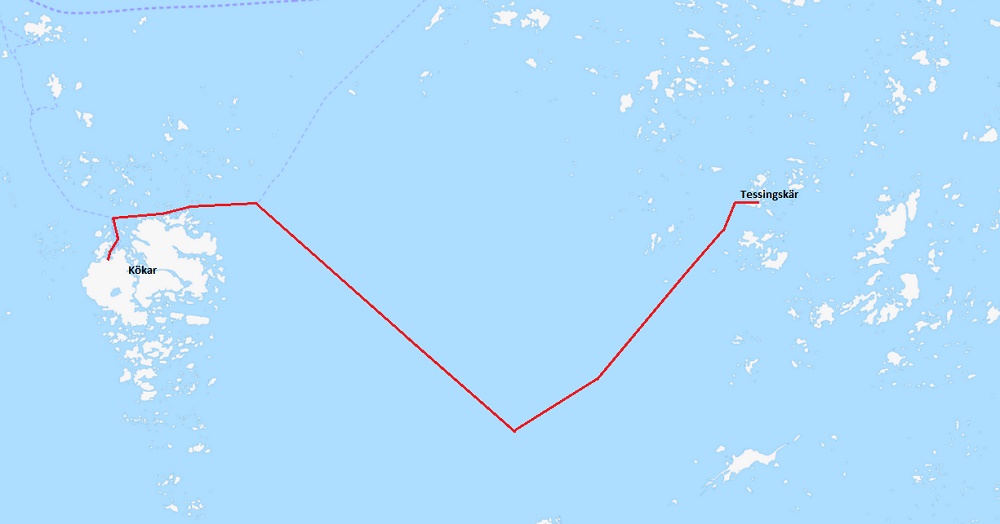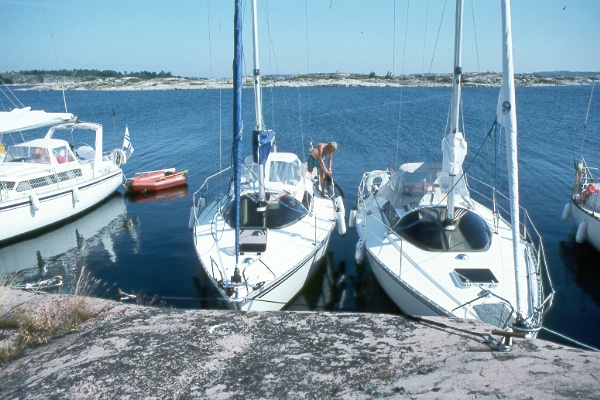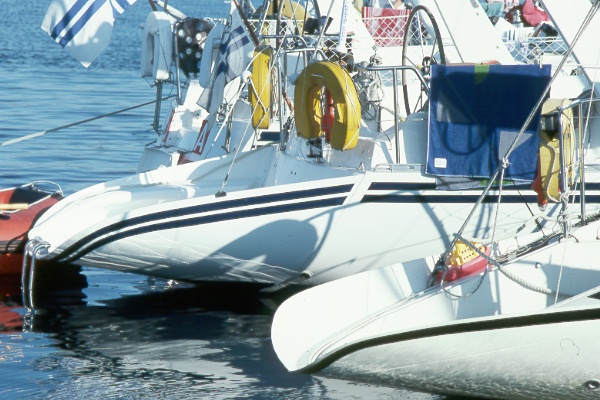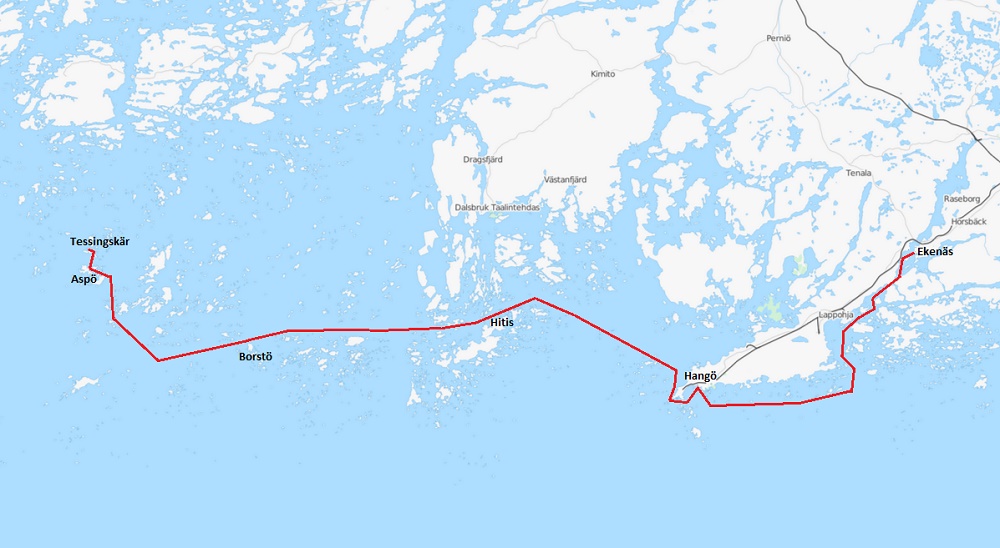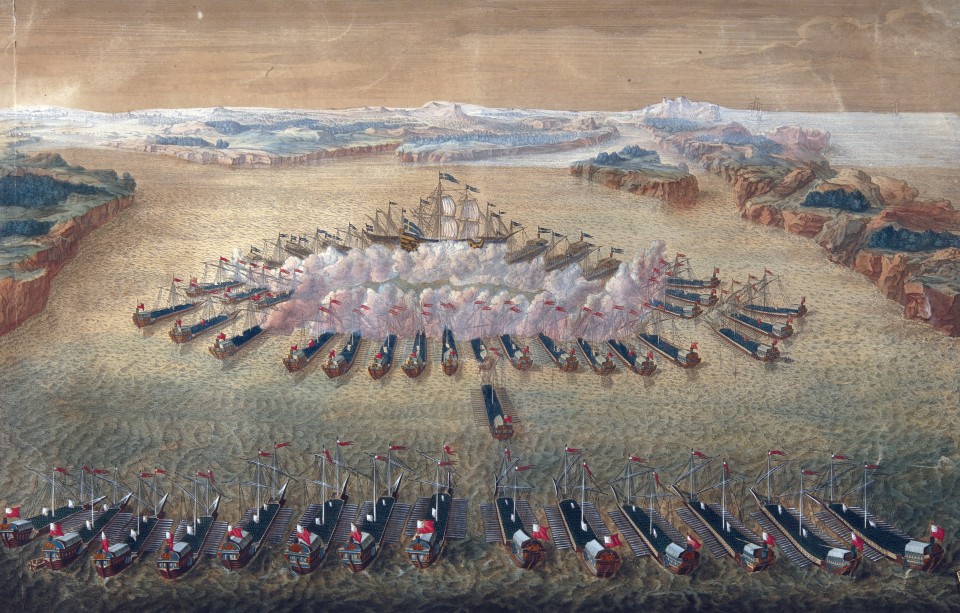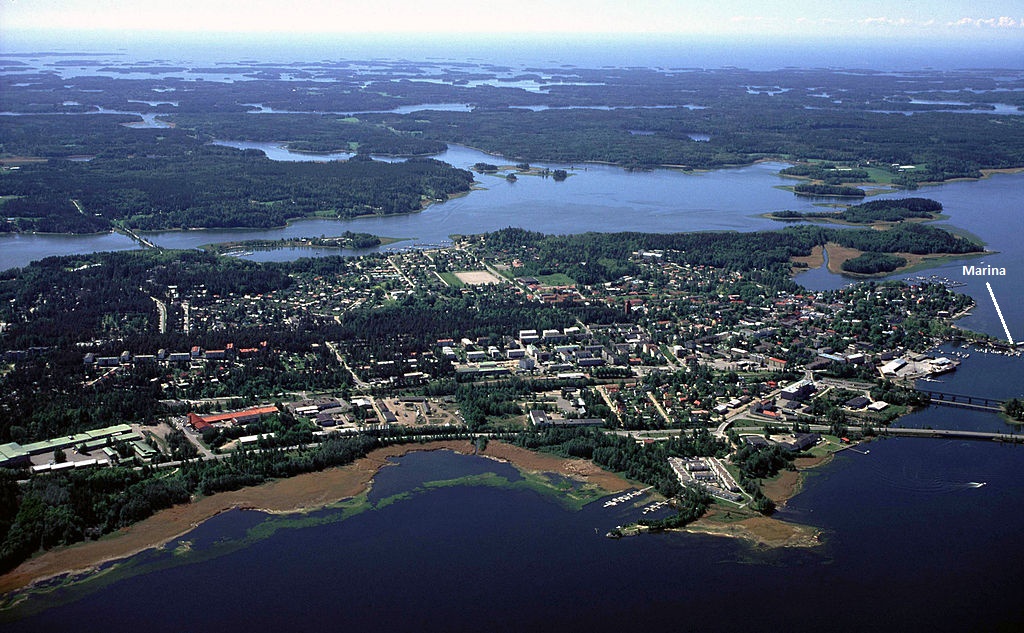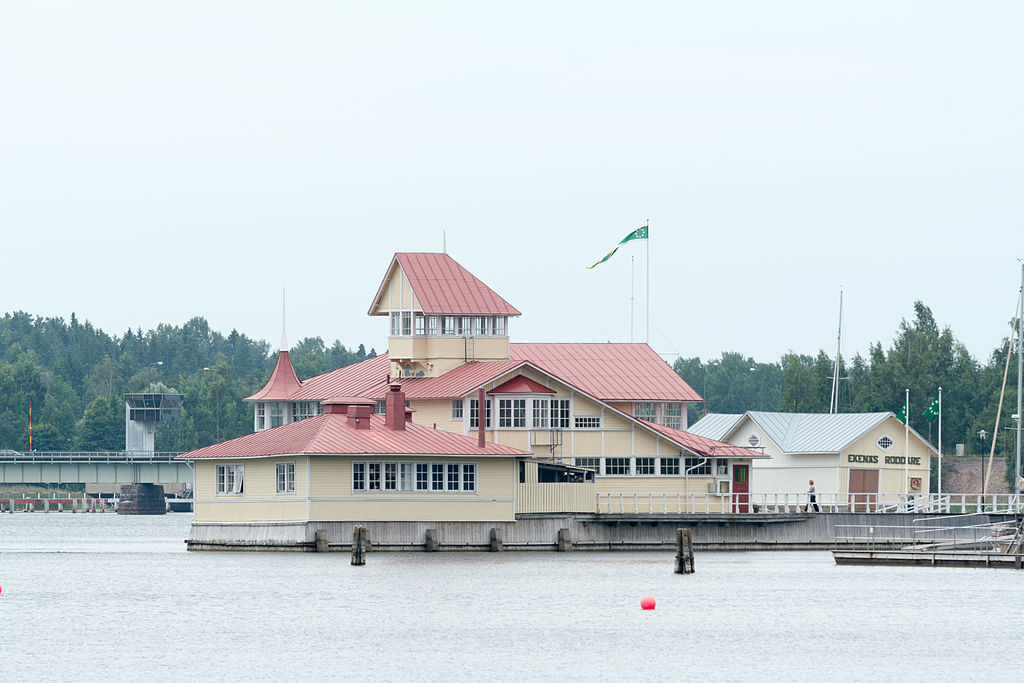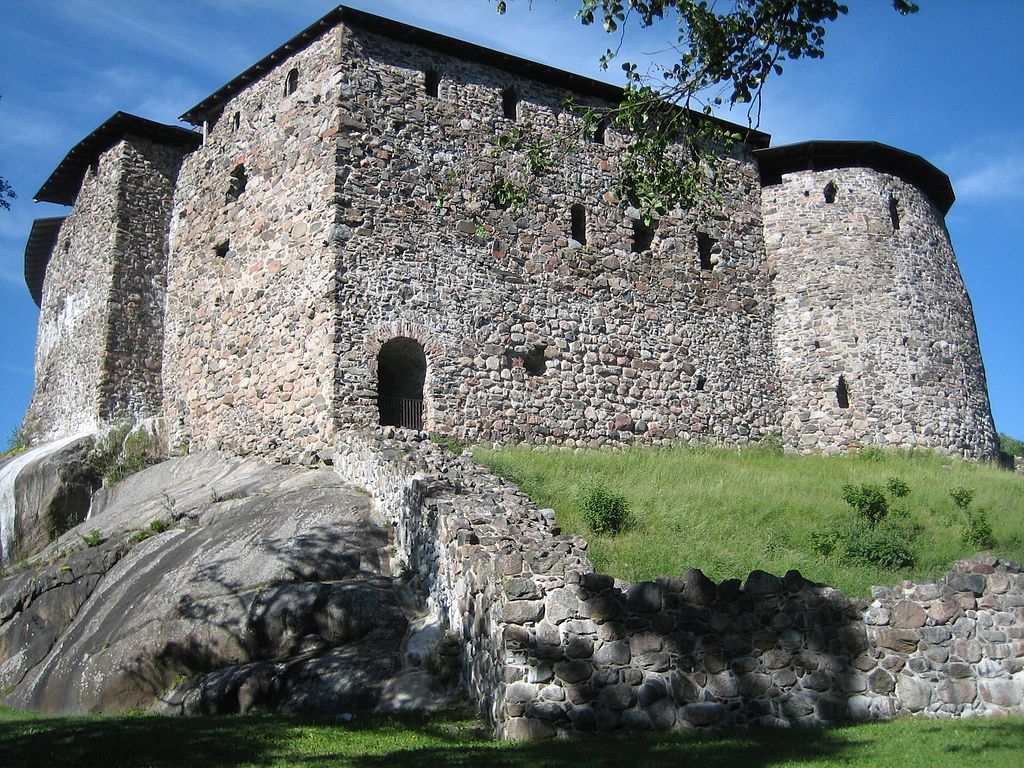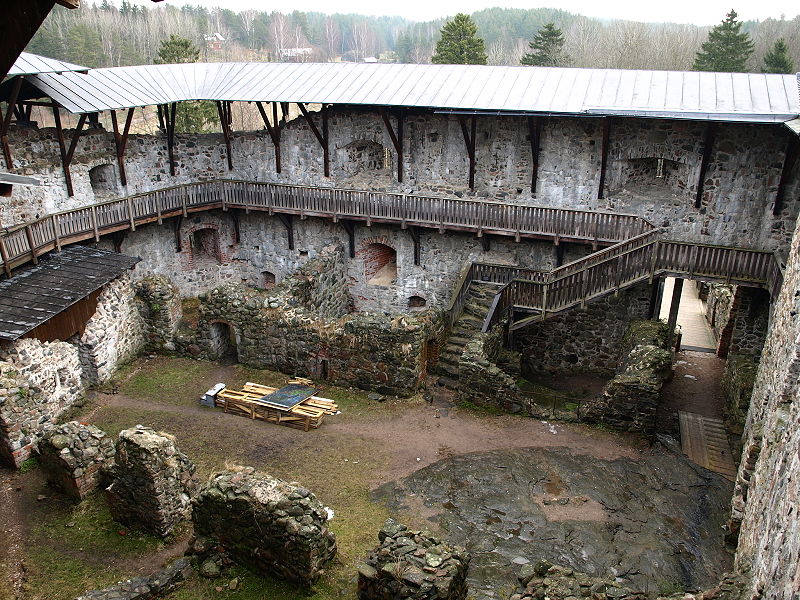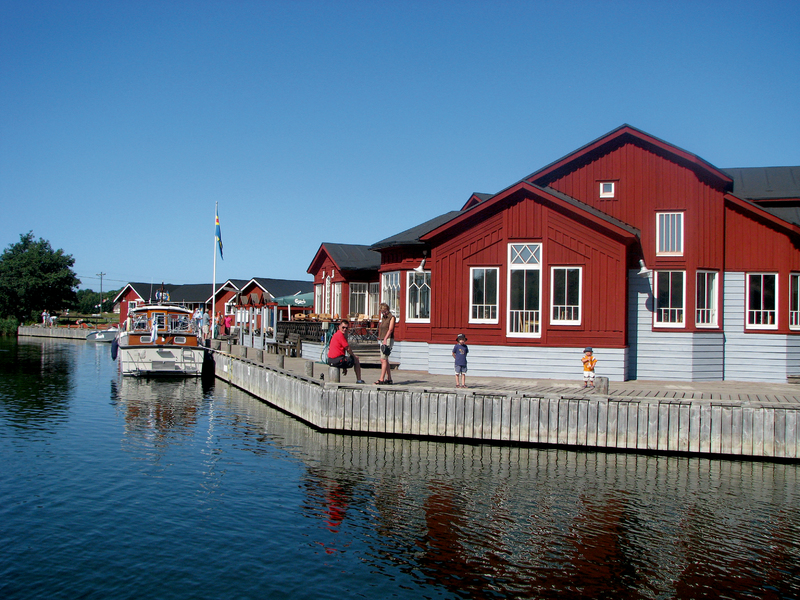
 1991
1991


To Finland through the Archipelago
Örebro, Stockholm, Aland, Kökar and Ekenäs by Johan Kjellander 2014
During summer 1990 Lynx was never in the water. We were too busy building our new home, Lobacken, for our growing family. Martin was born late 1989. In 1991 it was time to sail with a small child for the first time. We decided to go to our summer house on Åland and from there continue, first to Kökar and then Tessingskär where Guy-Christer Lönngren arranged a meeting for Guyline boats. Before returning home we also visited good friends in Ekenäs.
We took the usual route from Örebro through lake Hjälmaren and Mälaren to Stockholm. From Stockholm we motored in light winds to Möja island were we anchored for the night. Next day we sailed past Furusund and north in the Sea of Åland to the small island Märket. The plan was to get ashore and visit the lighthouse but the sea was too rough to make that possible so we continued to our summerhouse in Tengsödavik on Åland. From Stockholm this trip is 150 NM, a little longer than the route that we usually use, through Furusundsleden, across the Sea of Åland to Mariehamn and up Lumparen to Tengsödavik which is only 110 NM.
We tried again with Märket two years later and this time we were successful. If you want to read more about that, check 1993 years Cruising Log Book. If you want to know more about sailing from Örebro to Åland, check the Cruising Log Books from 1987 or 2009, I will skip that part here and start in Tengsödavik.
Tengsödavik - Kökar
Political map of Åland, by Sémhur, © CC-BY-SA 2.5
Åland is a demilitarized and autonomous region within the Republic of Finland. It is divided into 16 small municipalities with a total population of only 28.000 people 2014. The smallest municipality is the island of Sottunga with only 125 inhabitants. See above.
We had a few days to spend before the Guyline meeting in Finland so we decided to make a stop at the island of Kökar and maybe see some of Tove´s relatives. We have very few pictures from 1991 but we spent a day with our car on Kökar in 2014 and took a lot of new pictures. The photos below are from that visit.
Kökar is a small island with an interesting history. First traces of human life is from late bronze age when seal hunters from southern Baltic were believed to have lived here during the summers.
A settlement has been excavated in Otterböte and you can still see some of the remains. Foundations of nine houses and a well have been found in a beautiful and well protected hollow, see the mid picture above. The picture to the right shows the remains of one of the circular house foundations.
The oldest text known where Kökar is mentioned is from the 13:th century. In this document Kökar is described as a part of a sailing route between Denmark and Estland, the so called King Valdermars sail route. A good harbour on this route was available on the east side of Hamnö and as usual in history this was enough to found a persistent society. During the 15:th century a Franciscan monastery was established on Hamnö but was abandoned hundred years later when the Swedish king Gustav Vasa decided to break with Catholicism and make Sweden a Protestant country.
The monastery site has been excavated several times and remains of a number of different buildings have been found as well other artefacts and an old graveyard. The only visible remains today are protected in the small museum above next to Saint Anna church.
The buildings of the monastery slowly declined and were replaced by Saint Anna church 1784. On the left picture you see the church, the wooden belfry and the current graveyard to the far left. The right picture shows the north side of the church.
If you look inside you see that the church is a real Seamen's church. It even has a votive ship, that hangs in a rope from the ceiling, which is said to predict wind directions by turning around. Tove's mothers grand parents, named Lindqvist, were farmers on Kökar. They now rest on Saint Anna graveyard.
If you dig into the history of Kökar you will also find stories about pirates. One is that a Danish pirate ship more than 400 years ago ran aground on a small island just north of Kökar but the people on Kökar left the pirats alone to starve to death as a revenge for what the pirates had done to them. Many years later, the rumor sais that even in modern times, you could still find bones from dead pirates on the island which now is named Dömmanskär (Eng. Dead mans islet).
This story inspired author Benita Mattson to write an historic novel Kedjans Hämnd, that I read shortly after it was published in 1986. I remember it as very authentic and exiting.
Another interesting place on Kökar is Källskär. Best way to get there is to take the tourist boat from Hotell Brudhäll in Karlby.
There is no suitable harbour on Källskär so the boat will let you off in different places depending on the state of the sea. The guide will then take you on a walk with stops at two interesting places. The first is Källskärskannan.
Källskärskannan is a strange three meter high formation in red granite shaped by the ice age. There is nothing like it in Scandinavia.
The second stop is the previous summer house of Swedish Baron Göran Åkerhielm. He managed to bye one third of Källskär during the sixties and started to build what was to become a fantastic home with several buildings, exotic garden and a small harbour. All done with manual labour and natural materials only. Åkerhielm was a true naturalist and loved to spend his time on Källskär with people of the same kind.
One such was Tove Jansson, the mother of the Moomin characters. The baron learned to know her when he was building his house and wanted something to put over the fireplace. He then asked Tove to make a painting for him, which she later did. Many other artists and creative persons visited the baron during his summers on Kallskär. He even built a small house (right picture above) where visiting artists could stay.
In 1984 the baron donated his property to the community of Åland and today it is a museum. The guide will let you inside to have a look if you want to.
When you get back to Kökar you can also visit the museum of local history and culture. It shows how people lived here from 1800 until 1940. There are several old boats and engines to look at and there is also a very unique object, a Phonolite (klangsten), see above.
According to Encyclopedia Britannica, "The typical phonolite is a fine-grained, compact igneous rock that splits into thin, tough plates which make a ringing sound when struck by a hammer, hence the rock’s name". This kind of rock is not found elsewhere on Kökar so it must have been transported here. It makes a wonderful sound when you hit it.
On the west side of Kökar, near Kalen, you can find the remains of Russian fortifications from the first world war and Finnish fortifications from the second world war. The picture above is from that area and shows what I think is signs from grenade hits.
Kökar - Ekenäs
We spent two days in Sandvik marina on Kökar, saw the church and the ruins of the monastery and met Tove´s relatives. Tove´s grand mother was born on Kökar and many relatives still live here. Finally we also had to repair our foresail. Tove fixed that with her old but steady Pfaff sewing machine and Pavo and Gunnel helped her to find a new needle when the old one broke.
After this it was time to join the Guline meeting which this year was planned to be on Tessingskär 25 NM further east. I´m not quite sure about the name of this small island. In my hand written log book from that time it spells Tessingskär and that is how I remember people called it. The charts from 2014 however state that the name is Tvisingskär, maybe the name has changed?
This was the third time we attended a Guyline meeting. The program was the usual, first a short sail race and then a quiz walk around the island. Nice to meet other Guyline owners and also nice to meet Guy and Agnes and enjoy their hospitality. Tove took the pictures above during the previous meeting, 1989 on our way to Estonia.
After a couple of days on Tessingskär we set off to visit our friends Berndt and Ica in Ekenäs. Heavy fog forced us to stop after only a few miles in Aspö where we spent the first night together with Urpo and his wife in another Guyline. Next day visibility was better and we could continue all the way to Hitis where we enjoyed a nice sauna. It is not unusual with saunas in the harbours on these islands. Sometimes you pay a small fee and sometimes you pay nothing, sauna bath is a very strong tradition in Finland.
Hitis, just like Kökar, is mentioned in the old Danish itinerary as a stop on King Valdemars sail route and before that, the island was used by the Vikings. There is a Viking museum on the south part of Hitis and there you can see the remains of what is believed to be Finlands only, the Hitis Runestone.
Next day we continued east and by midday we were in Hangö where we stopped for fuel. Hangö city is situated on the tip of the most southerly peninsula on the Finnish mainland, Hangöudd and has therefore always been an important harbour. It´s history is full of wars, naval battles and invasions, many of them due to conflicts between Sweden and Russia.
Swedish/Russian battle of Hangö 1714, painting by Maurice Baquoi, © Public Domain
After loosing the war with the Soviet Union 1939-40 (the so called winter war) Finland was forced to let Hangöudd be used as a naval base by the Soviets for 30 years. 8000 Finnish citizens lost their homes but one year later the Soviets left Hangöudd and in the peace treaty signed in Paris after the second world war it was stated that the Soviets had no further claims on Hangöudd. There are still many remains from old military activity in Hangö.
Today Hangö harbour is economically important, often free from ice during the winter and thus possible to use when other harbours are closed or difficult to access. During the summer the harbour is popular among sailors. Each year since 1906 the Hangö regatta is arranged with more than 200 boats usually participating.
Ekenäs from above, Photo by H-E Nyman, © CC BY-SA 3.0
We filled our diesel tank in Hangö and spent the rest of the day to reach Ekenäs. In this part of Finland, Swedish language is still spoken in many places. In Ekenäs more than 80% of the population has Swedish as their native language while the figure for Hangö is 45%. The figure for Finland as a whole is only around 5%.
The picture above shows Ekenäs seen from north looking south. The marina is to the far right in the picture.
Restaurant Knipan, Photo by Motopark, © CC BY-SA 3.0
If you visit the marina you will also see Restaurant Knipan, built on poles in the water 1908. Knipan is a spectacular building and a good landmark.
Left: Raseborg Castle Ruin, Photo by Pöllö, © CC BY-SA 3.0
Right: Interior view, Photo by Cecil, © CC BY-SA 3.0
Another place to visit in Ekenäs is the ruin of Raseborg Castle. This castle was originally built by the Swedish lord Bo Jonsson Grip around 1370. The castle was then used by a number of Swedish lords until early 1500 when it was abandoned and no longer maintained. What we see today is what is left after 500 years of natural decay. The castle was never destroyed by war.
Today the ruin is a museum open to the public during the summer when there are also medieval festivals, concerts and theatrical performances.
Ekenäs - Örebro
We spent four days in Ekenäs and had a good time as always with good friends. When we left, Berndt and Ica joined us on Lynx to Hangö. From Hangö Tove, Martin and I continued to Borstö where we took a walk to see Borstögumman, a spectacular wooden figurehead that was found in the ice one winter a long long time ago. She is now placed as a statue on top of the island to keep watch over the harbour.
Restaurant Brudhäll in Karlby marina, photo by Ikonen © Visit Åland
Next day we sailed back to Kökar again, this time to the marina in Karlby, on the south side of the island. Here we bumped into old friends of Tove from Stockholm that she had not met for many years. After a beer in restaurant Brudhäll we all moved to our boat and continued our stories. Another old friend of Tove, this time from Mariehman, showed up and more stories had to be exchanged.
From Kökar we sailed back to our summer house in Tengsödavik and spent five days there before we had to start the journey back to Sweden. In Stockholm we met several boats also on their way back to Örebro. It was the end of July and this is the time when many people in Sweden end their summer holidays.
After returning to Örebro and some weekends on lake Hjälmaren (as ususal) we finished the season by the end of September. This year we sailed a little more than 1000 NM with Lynx, all three of us !
